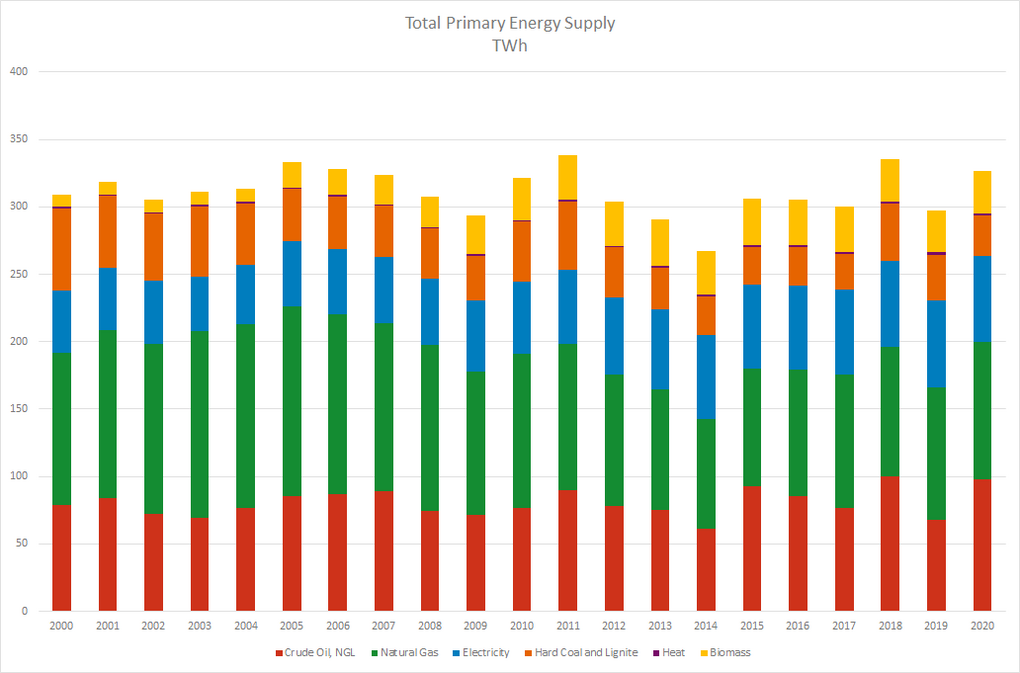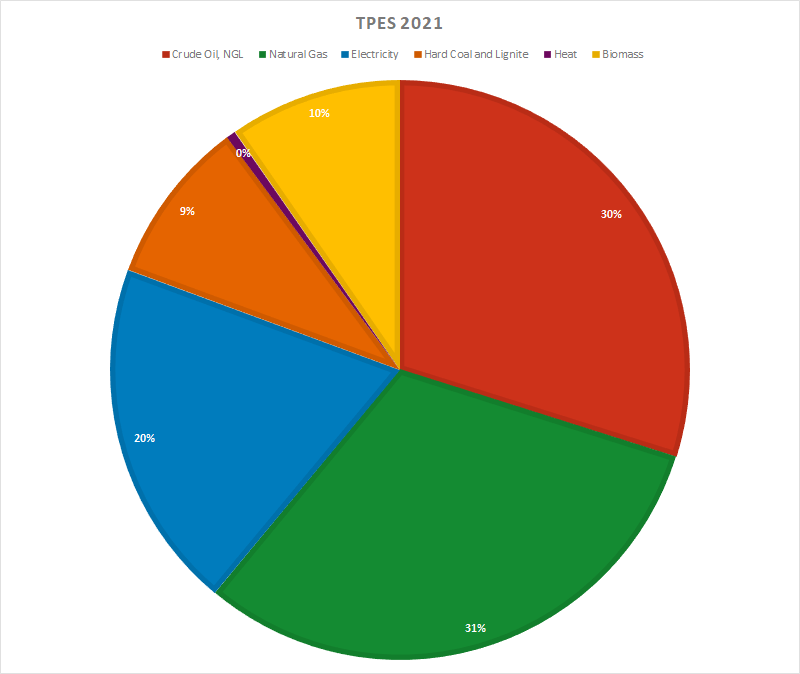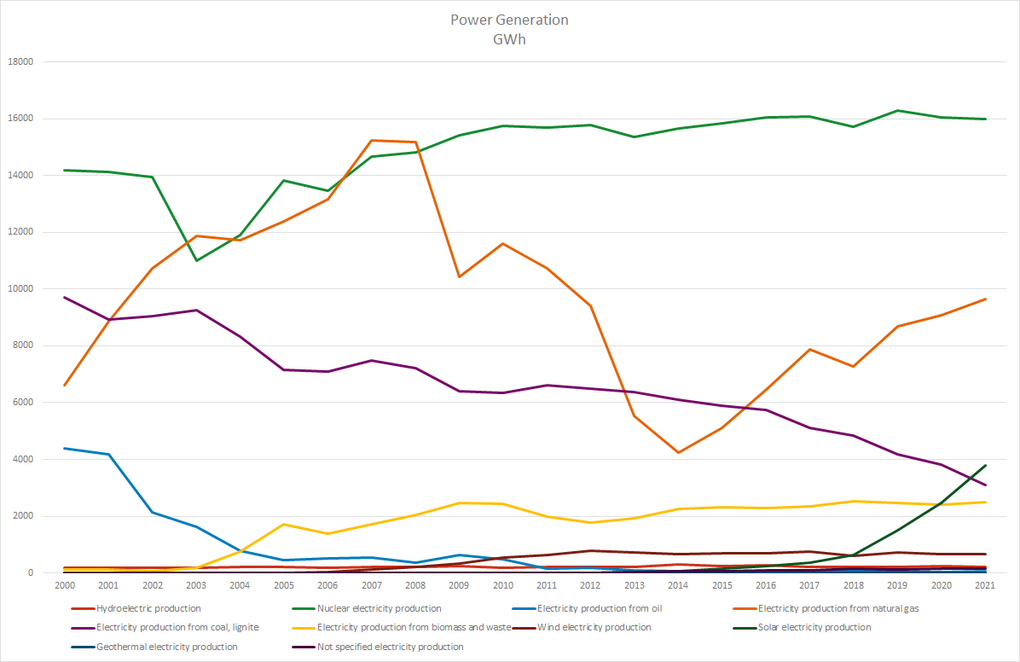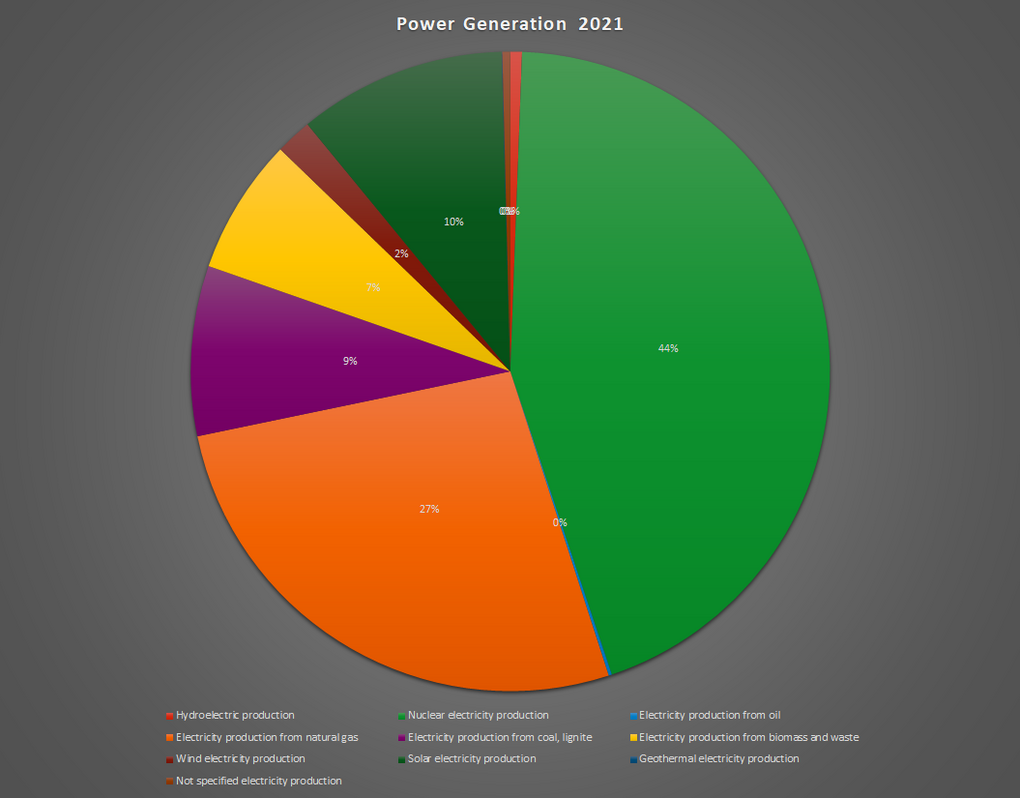Energy Supply
2020 saw a 63% increase in carbon-free electricity, with 46% coming from nuclear. The nation's reliance on Russian energy imports has grown in recent years.
Resources
Hungary has some energy reserves, including coal and lignite, whose extraction costs are high and rising (276 Mt of coal and 2.6 Gt of lignite, respectively), and hydrocarbons (5.2 BCM of gas and 2 Mt of oil reserves at the end of 2020), whose exploration and production costs are likewise high. The nation boasts Europe's most considerable geothermal potential with an established thermal capacity of 350 MWth and 8000 drillings. Its hydropower capacity is constrained (7 TWh).
Between 2014 and 2020, electricity generation increased by 3%, reaching 36 TWh in 2021. Previously, between 2008 (37 TWh) and 2014, power generation fell by 5% a year (27 TWh).
Electricity is one of Hungary's biggest imports; in 2020, it brought in 19 TWh, mainly from Slovakia (47%), Austria (32%), and Ukraine (13%); 7.5 TWh was exported, mainly to Croatia (43%) and Romania (29%). Preliminary data indicates that electricity imports climbed marginally to 20 TWh in 2021.
Power Generation
Electricity production has been rising and the countries targets are ambitious. Hungary targets 90% carbon neutral power generation by 2030 and climate neutrality by 2050. Coal power generation is supposed to be phased out by 2025. The State Secretariat for Energy and Climate Policy within the Ministry of Innovation and Technology oversees energy and climate policies. As of 2021, renewable energies like solar, wind and biomass account for about 15% of the power mix, which is 2% higher than in 2019. The main renewble source of electricity production is still hydopower, making up 29% of the mix.
Energy supply also relies heavily on nuclear power, which is seen as a cost-effective energy source with low GHG emissions. The share of nuclear energy keeps increasing (48% in 2019) and it generated by the Paks Nuclear Power Plant, which produces the lowest cost electricity in the country. A resolution to extend the lifespan of Paks Nuclear Power Plant by 20 years was passed in 2005 to ensure long-term domestic electricity supply.
In 2009, Parliament approved the commencement of preparatory activities for the construction of new units at Paks. A recent increase in demand has spurred the search for uranium in southwest Hungary. In June 2014, Parliament approved a EUR 10bn (USD 12.5bn) loan agreement with Rosatom to finance the construction of two blocks at the Paks Nuclear Power Plant, as the country targets a 90% carbon neutral power generation by 2030 and climate neutrality by 2050.
Source: www.enerdata.net
Last update: 07 2023




